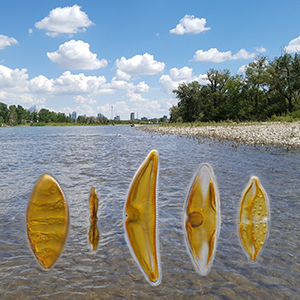Exploring diatom diversity through cultures - a case study from the Bow River, Canada

All claims expressed in this article are solely those of the authors and do not necessarily represent those of their affiliated organizations, or those of the publisher, the editors and the reviewers. Any product that may be evaluated in this article or claim that may be made by its manufacturer is not guaranteed or endorsed by the publisher.
Accepted: 18 November 2022
Authors
Diatom cultures can help answer taxonomic, biogeographic and ecological questions on a local and global scale. Unialgal cultures are derived from a single cell and provide abundant material for morphological and molecular analyses. The link between the historic morphological species concept and the molecular data is becoming increasingly important with the use of eDNA metabarcoding. Additionally, cultures provide insights into the life cycle of diatoms and thereby complement taxonomy and species ecology. In this study, we present an approach to extract benthic diatoms from an environmental sample to generate unialgal cultures. We explored diatom diversity in preserved assemblages and by culturing as many different taxa as possible from benthic freshwater samples taken on the same day from the Bow River in Calgary, Canada. With both methods we found a total of 221 different benthic diatom taxa, of which 182 were identified in the preserved diatom assemblages. Interestingly, an additional 39 taxa only appeared in the cultures. In total 129 strains were cultivated representing 71 different taxa. This study includes pictures of living cells demonstrating the additional merits of unialgal cultures, as they provide information on plastid details, auxospores and endosymbionts. Both, the identification of the diatom assemblages and the generation and identification of strains provide the foundation for additional water quality assessment tools, taxonomic insights and molecular references libraries.
Ethics Approval
Francesca Bona, Department of Life Sciences and Systems Biology, University of Turin, ItalySupporting Agencies
Verein der Freunde des Botanischen Gartens und Botanischen Museums Berlin Dahlem e.V. , Federal Ministry of Education and Research (German Barcode of Life 2 Diatoms, GBOL2)How to Cite

This work is licensed under a Creative Commons Attribution-NonCommercial 4.0 International License.






